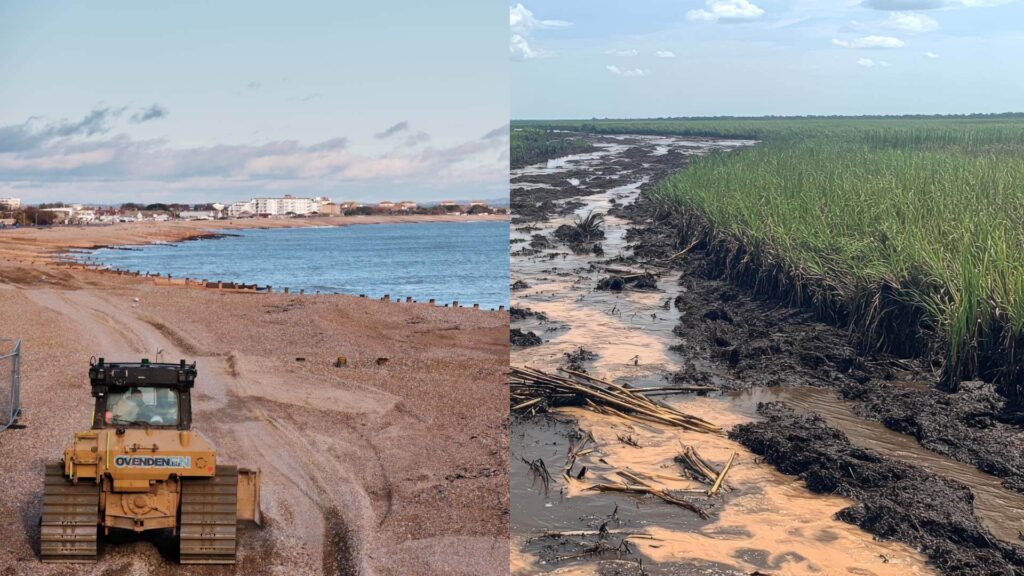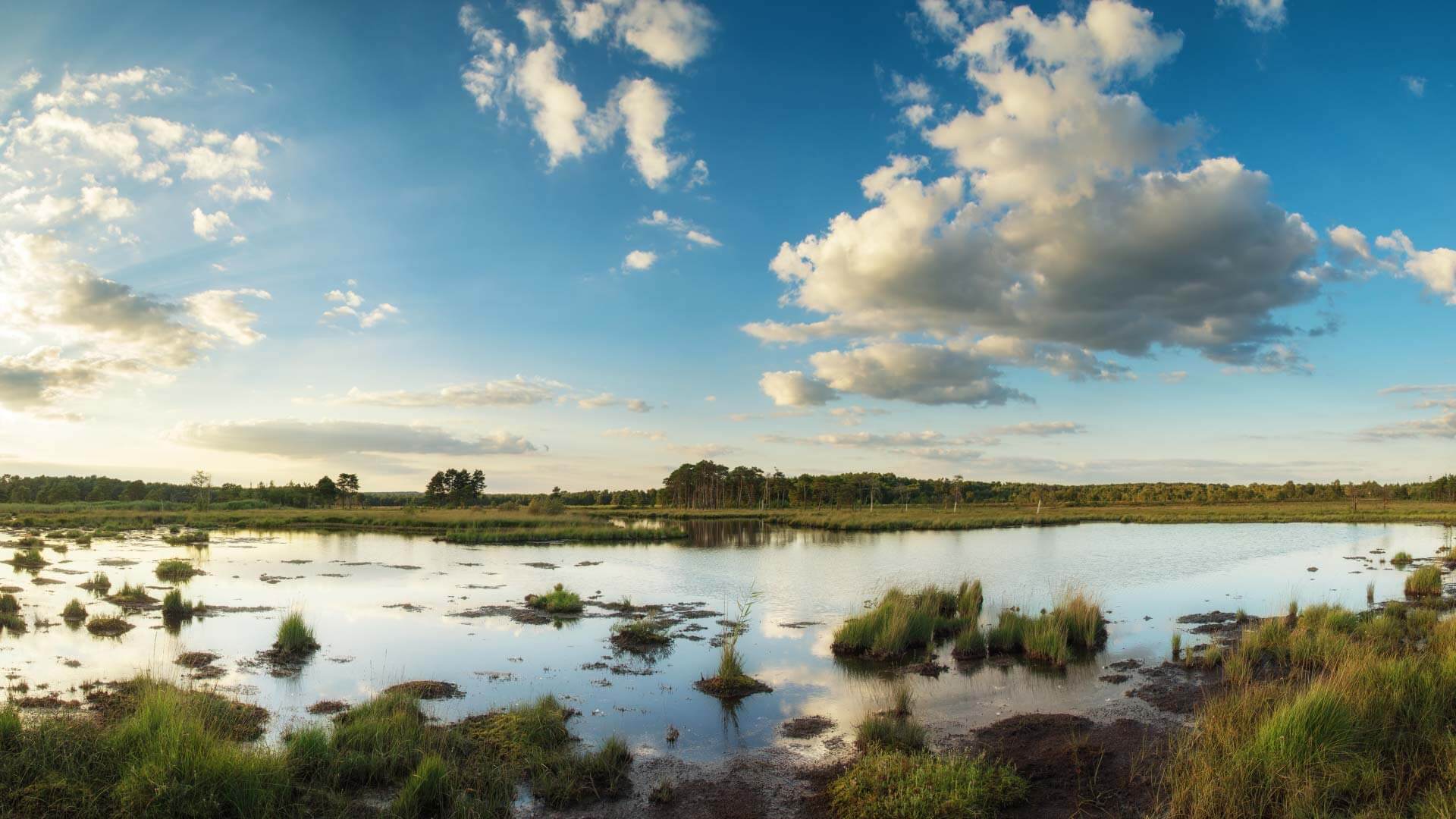Understanding Land Reclamation Meaning and Its Purpose
Land reclamation is the process of converting unproductive, degraded, or waterlogged land into usable areas for agriculture, urban expansion, and industrial development. This transformation can involve draining wetlands, restoring mined lands, or creating new land from bodies of water. The primary goal of land reclamation is to make land more functional for human use while also addressing environmental concerns such as erosion control, habitat restoration, and soil stabilization.
One of the most significant forms of land reclamation is mining land reclamation, where exhausted mines are rehabilitated to restore ecosystems or repurpose the land for agriculture, forestry, or commercial use. This process helps mitigate the environmental damage caused by mining operations, ensuring that formerly exploited areas regain ecological and economic value.
The Growing Global Demand for Land Reclamation
As populations grow and cities expand, the demand for land continues to rise. Many regions face land shortages due to rapid urbanization, industrialization, and agricultural expansion, making land reclamation a crucial solution. In densely populated areas, reclaiming land from coastal zones or wetlands has become a common practice to support infrastructure development and accommodate increasing housing needs. Similarly, mining land reclamation has become essential in regions heavily impacted by resource extraction, allowing communities to repurpose degraded land for sustainable use.
Additionally, agriculture is a driving force behind land reclamation. Many nations reclaim land to increase food production and combat soil degradation. By transforming barren or saline-affected areas into fertile farmland, land reclamation helps strengthen food security and support agricultural economies. Industrial sectors also contribute to the demand as businesses seek additional space for manufacturing plants, logistics hubs, and commercial development.
Balancing Development with Ecosystem Preservation
While land reclamation provides economic and societal benefits, it poses significant environmental challenges. Altering natural landscapes can disrupt ecosystems, leading to habitat loss, biodiversity decline, and changes in water flow patterns. The use of dredged materials, soil filling, and heavy machinery in land reclamation projects can contribute to soil erosion, pollution, and increased carbon emissions.
Striking a balance between development and ecosystem preservation is crucial. Sustainable land reclamation practices focus on minimizing environmental impact by integrating eco-friendly restoration methods, such as reforestation, wetland conservation, and responsible waste management. Effective policies and technological innovations in mining land reclamation and other reclamation projects are key to ensuring that reclaimed land remains productive without causing long-term ecological harm.
By understanding the meaning of land reclamation, its purpose, and the rising global demand, stakeholders can work toward responsible land-use strategies that meet development needs while safeguarding natural ecosystems.
Understanding Land Reclamation

Land reclamation is a process that transforms unusable, degraded, or submerged land into productive areas suitable for agriculture, urban development, or industrial use. This practice has been used for centuries, enabling societies to expand their living spaces, increase food production, and extract valuable resources. While land reclamation’s meaning has evolved, its core purpose remains the same: modifying landscapes to meet human and economic needs.
History and Applications of Land Reclamation
Land reclamation has a long history. Ancient civilizations, such as the Mesopotamians and Egyptians, practiced early forms of reclamation by draining marshlands and developing irrigation systems to cultivate crops. In the Netherlands, large-scale reclamation projects using dikes and pumps have been in place for centuries, turning coastal wetlands into farmland.
In modern times, land reclamation has expanded beyond agriculture to include urban expansion, industrial development, and environmental restoration. Many densely populated countries use reclamation to create new land for housing and infrastructure. Coastal cities, such as Dubai and Singapore, have built artificial islands to accommodate growing populations and tourism industries. Mining land reclamation has also gained importance, focusing on restoring landscapes that have been impacted by resource extraction.
Types of Land Reclamation

There are several types of land reclamation, each designed to address specific environmental and economic challenges:
Coastal Land Reclamation
Coastal land reclamation involves creating new land by filling in coastal waters, estuaries, or shallow seabeds with sand, rock, or dredged materials. This method is commonly used in regions facing land shortages due to urban expansion. However, it requires careful management to prevent negative environmental impacts, such as increased erosion and loss of marine habitats.
Wetland Reclamation
Wetland reclamation focuses on converting marshes, swamps, and floodplains into usable land. Historically, wetlands were drained for agriculture and development, but in recent years, there has been a shift toward restoring and conserving these ecosystems. When done sustainably, wetland reclamation can improve water management and support biodiversity.
Mining Land Reclamation
Mining land reclamation is the process of restoring landscapes that have been disturbed by mining activities. Open-pit mines, quarries, and underground mines often leave behind degraded land that is unsuitable for natural regeneration. Through rehabilitation efforts such as soil stabilization, reforestation, and water treatment, former mining sites can be repurposed for agriculture, recreation, or even ecological restoration. This type of reclamation is essential for minimizing the long-term environmental impact of mining operations.
Industries Involved in Land Reclamation
Several key industries drive land reclamation, utilizing it for economic growth, resource extraction, and environmental restoration:
Construction and Urban Development
Land reclamation is widely used in the construction sector to create space for housing, commercial centers, and transportation infrastructure. Many cities have expanded their footprints by reclaiming land from the sea or converting underutilized land for urban development.
Agriculture and Food Production
Agriculture has long relied on land reclamation to increase arable land for food production. Countries can enhance food security and agricultural output by converting wetlands, deserts, or degraded soil into farmland. However, sustainable practices are necessary to prevent long-term soil depletion and ecosystem loss.
Resource Extraction and Mining
The mining industry is deeply involved in land reclamation. Laws and environmental regulations require mining companies to restore land after resource extraction. Reclaimed mining sites can be converted into forests, grasslands, or even reservoirs, helping to mitigate the environmental impact of mining.
As land reclamation continues to evolve, technological advancements and sustainable practices are becoming increasingly important to balance economic development with environmental preservation.
Environmental Impacts of Land Reclamation
Land reclamation plays a crucial role in expanding habitable and usable land, but its environmental consequences can be significant. From biodiversity loss to climate change implications, improper reclamation methods can cause long-term ecological damage. Understanding these impacts is essential to developing sustainable solutions that minimize harm while meeting development goals.
Loss of Biodiversity
One of the most pressing concerns associated with land reclamation is the destruction of natural habitats, which can lead to the displacement of wildlife. When forests, wetlands, or coastal zones are altered, native species often struggle to adapt, resulting in population declines or even local extinctions. The removal of vegetation and changes in land structure disrupt the food chain, affecting both terrestrial and aquatic ecosystems.
In coastal reclamation projects, the filling of wetlands and mangroves eliminates crucial breeding and feeding grounds for fish, birds, and marine life. Similarly, mining land reclamation, when not properly managed, can leave degraded landscapes with minimal vegetation, reducing the availability of shelter and food for native species. Without careful ecological planning, reclamation efforts can lead to irreversible biodiversity loss.
Soil Degradation and Erosion
Land reclamation alters soil composition, often reducing fertility and increasing vulnerability to erosion. When large-scale excavation or dredging is involved, natural topsoil layers are disturbed, leading to nutrient depletion. In agricultural reclamation, excessive use of fertilizers and soil amendments can further degrade soil health, making it less productive over time.
Reclaimed land is at a higher risk of desertification in certain environments, especially arid and semi-arid regions. Without proper soil stabilization techniques, wind and water erosion can strip away newly placed soil, rendering the land unsuitable for long-term use. Mining land reclamation is particularly challenging, as mine tailings and overburden materials often contain low-nutrient soils, requiring extensive remediation efforts to restore soil fertility.
Water Resource Disruptions
The alteration of natural landscapes through land reclamation can significantly impact water resources, both above and below ground. Changes to hydrology can disrupt groundwater levels, leading to reduced freshwater availability for surrounding communities and ecosystems. Reclaimed land often has poor drainage properties, increasing the likelihood of waterlogging or drought conditions depending on local climate patterns.
Coastal land reclamation projects can lead to increased salinity in nearby water sources. The removal of natural barriers like mangroves and estuaries allows saltwater intrusion into freshwater reserves, affecting drinking water supplies and agricultural irrigation. In mining land reclamation, abandoned pits and tailing ponds may alter natural water flow, leading to unintended flooding or groundwater contamination.
Pollution Concerns
Pollution is another major environmental impact of land reclamation, particularly when industrial and urban expansion is involved. The materials used for filling and stabilizing reclaimed land, such as dredged sediments or construction waste, may contain heavy metals, microplastics, or chemical contaminants. Without proper environmental assessments, these pollutants can leach into surrounding soil and water sources, posing risks to both ecosystems and human populations.
Mining land reclamation presents additional pollution challenges. Residual mining waste, including toxic metals and acid mine drainage, can severely impact air and water quality. If not managed properly, these pollutants can persist in the environment for decades, affecting nearby rivers, lakes, and groundwater supplies. Effective remediation and waste management practices are essential to reducing pollution risks in reclaimed mining areas.
Climate Change Implications
Land reclamation contributes to climate change through increased carbon emissions and disruption of natural carbon sequestration processes. Clearing forests, wetlands, and peatlands for reclamation releases stored carbon into the atmosphere, accelerating global warming. Additionally, the energy-intensive processes involved in dredging, soil transportation, and infrastructure development further increase greenhouse gas emissions.
Deforestation in land reclamation projects reduces the planet’s ability to absorb carbon dioxide, worsening climate change. In mining land reclamation, disturbed landscapes often struggle to support vegetation regrowth, limiting plants’ ability to act as carbon sinks. Without sustainable restoration practices, reclaimed land may become a long-term source of carbon emissions rather than a solution for environmental restoration.
Addressing these environmental impacts can help policymakers and developers develop more sustainable land reclamation practices that balance economic growth with ecological preservation.
Strategies for Sustainable Land Reclamation

Sustainable land reclamation is essential for balancing development with environmental conservation. While land reclamation is often necessary for urban expansion, agriculture, and resource extraction, improper techniques can lead to soil degradation, biodiversity loss, and water pollution. By implementing eco-friendly strategies, restoring ecosystems, adhering to regulatory frameworks, and leveraging innovative technologies—especially in mining land reclamation—developers can minimize negative impacts and ensure long-term sustainability.
Eco-Friendly Reclamation Techniques
Sustainable land reclamation relies on environmentally friendly techniques that reduce harm to ecosystems and promote long-term land productivity.
- Bioengineering and Natural Vegetation Restoration
Bioengineering techniques, such as planting deep-rooted vegetation and installing erosion control structures, help stabilize reclaimed land. Natural vegetation restoration enhances soil quality, prevents erosion, and supports local biodiversity.
- Sustainable Dredging and Sediment Reuse
IDredgingis is often necessary to create new land. In coastal and wetland reclamation, Sustainable dredging practices involve carefully managing sediment removal to minimize habitat disruption. Additionally, dredged materials can be reused to restore degraded areas, reducing waste and environmental impact.
Restoration of Ecosystems
One of the most critical aspects of land reclamation is ensuring that reclaimed land can support ecosystems and biodiversity.
- Implementing Native Plant Species
Using native plant species in restoration efforts helps rebuild natural ecosystems and supports local wildlife. Native vegetation requires less maintenance, is more resistant to local climate conditions, and contributes to overall biodiversity recovery.
- Wetland Restoration as a Mitigation Strategy
Wetlands play a crucial role in water filtration, flood control, and habitat preservation. Instead of converting wetlands for development, modern reclamation strategies focus on restoring or creating artificial wetlands to offset environmental impacts.
Regulatory and Policy Frameworks
Effective land reclamation requires strong policies and regulations to ensure that projects align with environmental protection goals.
- The Role of Environmental Regulations
Governments and regulatory agencies impose strict guidelines on land reclamation projects to prevent environmental damage. Compliance with these regulations helps protect ecosystems while allowing sustainable development.
- Environmental Impact Assessments (EIAs)
An environmental Impact Assessment (EIA) is crucial for evaluating potential ecological consequences. Before starting a land reclamation project, EIAs help identify risks, propose mitigation strategies, and ensure that projects adhere to sustainable practices.
Innovations in Mining Land Reclamation
Mining land reclamation presents unique challenges due to the large-scale disturbance of land and ecosystems. However, innovative techniques can help restore mined areas and repurpose them for productive use.
- Geomorphic Landform Design
An AGeomorphic landform design is a modern approach to mining land reclamatio,n and It mimics natural landscapes to enhance stability and support vegetation growth. This method improves water drainage, reduces erosion, and facilitates ecosystem recovery.
- Soil Remediation and Land Stabilization
Mining activities often leave behind nutrient-deficient and contaminated soils. Advanced soil remediation techniques, such as bioremediation and chemical stabilization, help restore soil fertility and make the land suitable for reforestation, agriculture, or conservation.
Community and Stakeholder Engagement
A sustainable land reclamation project must consider the needs and interests of local communities and stakeholders.
- Involving Local Communities
Engaging local communities in the reclamation process ensures that the land is repurposed in a way that benefits the people who depend on it. Community involvement can lead to better land management practices and foster long-term sustainability.
- Encouraging Sustainable Land Use Practices
Land management strategies after reclamation should prioritize sustainable practices such as agroforestry, conservation areas, and ecotourism. These approaches help maintain the integrity of reclaimed land while supporting economic and environmental sustainability.
Implementing these strategies can ensure that land reclamation meets development needs while preserving natural ecosystems and ensuring long-term land productivity.
The Future of Land Reclamation
As the global demand for land increases, the future of land reclamation is shifting toward more sustainable and technologically advanced solutions. Emerging trends focus on minimizing environmental impact while maximizing economic and ecological benefits. From innovative restoration techniques to data-driven optimization, land reclamation is evolving to strike a balance between development and long-term sustainability.
Emerging Trends in Sustainable Land Reclamation
Modern land reclamation is no longer solely about creating new land but also about restoring and enhancing existing landscapes. Several key trends are shaping the industry’s future:
- Nature-Based Solutions
Sustainable land reclamation increasingly incorporates nature-based approaches, such as wetland restoration, reforestation, and coastal buffer zones. These techniques help protect against erosion, improve water retention, and enhance biodiversity.
- Circular Economy in Reclamation
Instead of relying on resource-intensive fill materials, reclamation projects are adopting circular economy principles by repurposing dredged sediments, mining byproducts, and construction waste. This reduces environmental disruption while promoting resource efficiency.
- Carbon-Neutral Reclamation Initiatives
With growing concerns about climate change, land reclamation projects are integrating carbon sequestration strategies. Techniques such as afforestation, soil carbon storage, and biochar application help offset emissions while improving soil health.
The Role of Technology and Data in Optimizing Reclamation Efforts
Technological advancements are transforming land reclamation, making it more precise, efficient, and sustainable. Key innovations include:
- Remote Sensing and GIS Mapping
Geographic Information Systems (GIS) and satellite imagery enable real-time monitoring of reclaimed areas. These tools help assess soil stability, vegetation growth, and environmental impact over time.
- AI and Machine Learning for Land Analysis
Artificial intelligence (AI) is being used to analyze soil conditions, predict erosion patterns, and optimize land-use planning. AI-driven models can identify the most effective reclamation strategies for specific environments.
- Drones and Autonomous Equipment
Drones play a crucial role in surveying reclaimed areas, monitoring progress, and detecting environmental changes. Autonomous machinery is also being used in mining land reclamation to restore landscapes with minimal human intervention.
- 3D Modeling and Digital Twins
Digital twin technology creates virtual models of reclaimed land, allowing planners to simulate different reclamation scenarios. This helps refine techniques before implementing large-scale projects, reducing costs and environmental risks.
Balancing Economic Growth with Long-Term Environmental Sustainability
Sustainable land reclamation must balance the need for economic expansion with the preservation of natural ecosystems. Key strategies include:
- Integrating Reclamation into Urban Planning
Cities facing land shortages are incorporating land reclamation into long-term urban development plans. Smart city initiatives prioritize green infrastructure, eco-friendly building materials, and sustainable water management in newly reclaimed areas.
- Eco-Industrial Development
Reclaimed land is increasingly being used for eco-industrial parks, where industries operate with minimal environmental impact. These projects focus on renewable energy, waste-to-resource programs, and closed-loop production systems.
- Sustainable Mining Land Reclamation
The future of mining land reclamation involves converting former mining sites into productive landscapes, such as wildlife habitats, agricultural zones, or renewable energy hubs. Innovative land-use planning ensures that post-mining landscapes contribute to both economic and environmental goals.
Land reclamation can continue to support development while preserving the environment for future generations by integrating advanced technology, sustainable practices, and strategic planning.
Conclusion
Land reclamation remains a vital tool for addressing land shortages, supporting economic growth, and restoring degraded landscapes. However, its environmental impacts cannot be ignored. From biodiversity loss and soil degradation to water resource disruptions and climate change implications, improper land reclamation can have long-lasting consequences. By implementing sustainable strategies such as eco-friendly restoration techniques, regulatory compliance, and innovative mining land reclamation methods, developers can minimize ecological damage while maximizing reclaimed land’s long-term viability.
The future of land reclamation lies in integrating advanced technology, data-driven solutions, and nature-based approaches that prioritize both development and environmental preservation. As industries continue to evolve, balancing economic growth with sustainability will be essential in ensuring that reclaimed land remains productive and resilient. Through responsible planning, community engagement, and continuous innovation, land reclamation can contribute to a future where development and ecosystem health coexist harmoniously.



